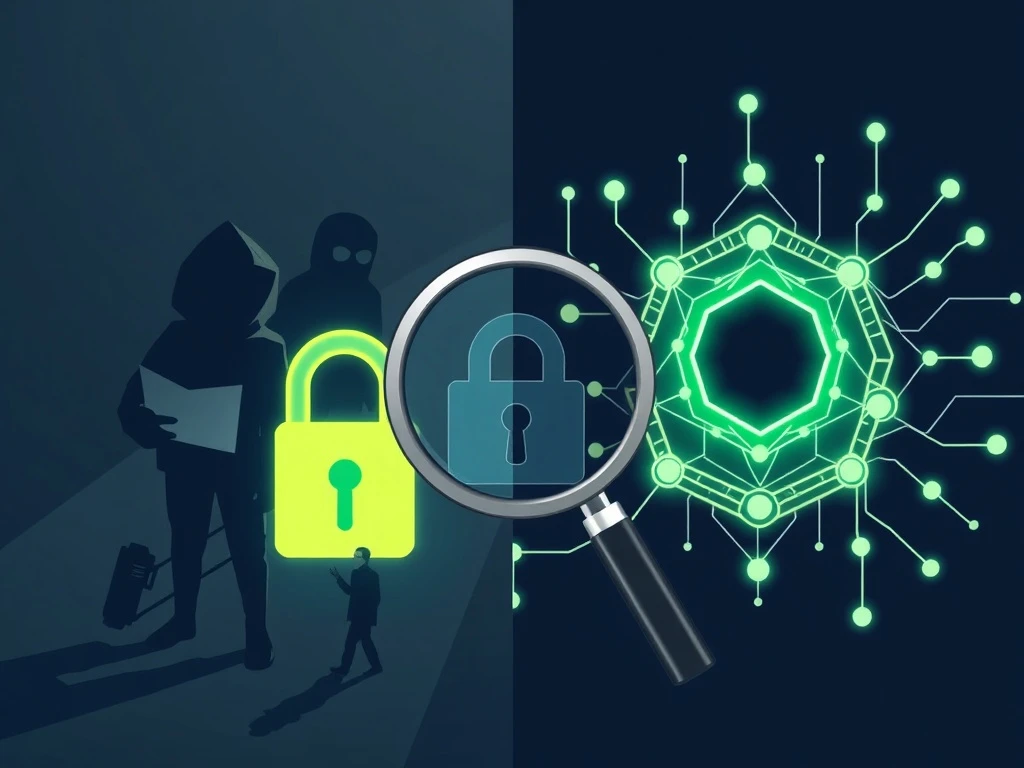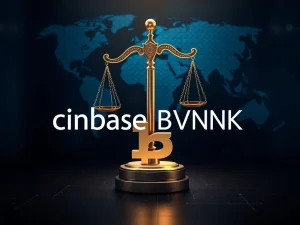Demystifying Crypto Scams: Unveiling the Truth About Blockchain Security and Digital Assets

Headlines often paint a grim picture of the cryptocurrency world, frequently highlighting crypto scams, hacks, and widespread fraud. Many people, therefore, perceive the digital asset space as inherently risky or even criminal. However, this narrative often overshadows the remarkable innovation, resilience, and the dedicated community actively building a more secure financial future. This article delves into the true landscape of crypto crime, separating perception from reality, and exploring the powerful technologies that enhance blockchain security.
Understanding the Landscape of Crypto Scams and Fraud
Mainstream media frequently associates blockchain technology with illicit activities. However, the actual data presents a far more nuanced story. Ari Redbord, global head of policy at TRM Labs and a former U.S. federal prosecutor, offers a crucial perspective. He notes, “The reality is that we’ve seen real scam activity in the crypto ecosystem over the last two years, about $50 billion in scams and fraud.” While this figure seems substantial, it represents a small fraction of overall activity. Redbord emphasizes, “But illicit activity still makes up about 1% of all activity within the crypto ecosystem. So we’re talking about 99% lawful activity.”
This statistic provides a vital reality check. It clarifies that crypto crime is not the defining characteristic of the industry. Instead, it is a challenge, much like those faced by any burgeoning technology. Bad actors often gravitate towards transformative innovations early on. Redbord explains, “Bad actors are always early adopters of transformative technology, and cryptocurrency and blockchain are just that.” The promise of rapid, cross-border value transfer, while beneficial for legitimate users, also attracts those seeking to exploit the system.
Key takeaways from this analysis include:
- **The vast majority of crypto activity is lawful:** Approximately 99% of transactions are legitimate.
- **Scam activity exists:** Around $50 billion in scams and fraud occurred over the last two years.
- **Early adoption by bad actors:** Criminals exploit new technologies for their inherent speed and reach.
Blockchain Security: An Unprecedented Advantage in Combating Crypto Crime
Despite the challenges posed by bad actors, the very nature of blockchain technology offers powerful tools for combating crypto crime. Its inherent transparency provides an advantage rarely seen in traditional financial systems. Redbord highlights this crucial aspect: “Every transaction is traceable, trackable and immutable on a public ledger. And that means we can do compliance. We can do investigations better than we ever could before.”
This immutable and public record transforms how law enforcement and compliance professionals operate. Unlike cash transactions or opaque offshore accounts, every movement of funds on a public blockchain leaves a permanent, verifiable trail. This traceability allows investigators to follow the flow of illicit funds, identify perpetrators, and build stronger cases. Therefore, the transparent design of blockchain, often mistakenly seen as a vulnerability, is actually one of its greatest strengths in maintaining blockchain security.
Consider these aspects of blockchain’s investigative power:
- **Traceability:** Funds can be followed across the network.
- **Immutability:** Transaction records cannot be altered or deleted.
- **Public Ledger:** All transactions are openly viewable, albeit often pseudonymously.
These features enable a new era of financial forensics. They empower authorities to understand and respond to illicit activities more effectively. This contrasts sharply with traditional finance, where tracing funds can be a complex and time-consuming process involving multiple jurisdictions and financial institutions.
Innovation for a Secure Future: Zero-Knowledge Proofs and Digital Identity
The discussion around blockchain security often raises questions about privacy. How can transparency coexist with the need for individual privacy? The answer lies in cutting-edge innovations that are actively being developed within the ecosystem. Redbord points to several key technologies that are threading this needle, specifically mentioning “zero-knowledge proofs, around privacy pools, around digital identity.”
Zero-knowledge proofs (ZK-proofs) are a revolutionary cryptographic technique. They allow one party to prove to another that a statement is true, without revealing any information beyond the validity of the statement itself. For instance, a user could prove they meet an age requirement without disclosing their actual birthdate. Redbord notes that ZK-proofs “allow us to thread that needle between ensuring lawful users of this technology have the privacy they need, but also stopping bad actors like North Korea who threaten the ecosystem.”
Other innovations like privacy pools and digital identity solutions also play a critical role. Privacy pools offer mechanisms to obscure transaction details while maintaining regulatory compliance. Digital identity solutions aim to provide verifiable credentials without compromising personal data. These advancements demonstrate the industry’s commitment to building a robust and secure environment for digital assets, balancing user privacy with the imperative to prevent crime.
Combating Crypto Crime: The Role of Compliance and Community
The fight against crypto crime is not solely a technological battle; it is also a collaborative human effort. The industry has fostered a strong community of professionals dedicated to upholding security and integrity. Redbord expresses great optimism, stating, “What keeps me so positive is the people I get to interact with every day … this incredible community of compliance professionals, law enforcement and builders.”
Compliance professionals, like those at TRM Labs, are at the forefront of this effort. They develop tools and strategies to monitor transactions, identify suspicious patterns, and report illicit activities. Law enforcement agencies are increasingly adapting to the unique challenges and opportunities presented by blockchain technology. They collaborate with industry experts to enhance their investigative capabilities. Meanwhile, developers and builders continually innovate, creating more secure protocols and user-friendly tools that strengthen the overall ecosystem.
This collaborative spirit is essential for the long-term success and widespread adoption of digital assets. It ensures that as the technology evolves, so too do the mechanisms for safeguarding users and preventing abuse. The ongoing dialogue between these groups helps shape effective policies and best practices, further solidifying the foundation of trust in the crypto space.
Building Confidence in Digital Assets: A Collaborative Effort
The narrative surrounding crypto scams and hacks often overshadows the significant progress made in securing the ecosystem. The reality, as illuminated by experts, is one of continuous improvement and proactive measures. The vast majority of activity within the crypto space is legitimate, driven by innovation and a desire for a more efficient financial system. While challenges remain, the transparency of blockchain, combined with advanced cryptographic solutions like zero-knowledge proofs, provides powerful tools to combat illicit activities.
The commitment of compliance professionals, law enforcement, and builders is creating a robust framework for the future of digital assets. This collaborative effort builds confidence, ensuring that the benefits of this transformative technology can be realized safely and securely. By focusing on data, innovation, and community, the crypto industry is steadily moving towards a future where security and trust are paramount.
To gain a deeper understanding of these critical discussions, listeners can access the complete conversation on the Clear Crypto Podcast. It is available on Crypto News Insights’s Podcasts page, Apple Podcasts, or Spotify. Exploring these insights helps demystify the complexities of blockchain and its evolving security landscape.







